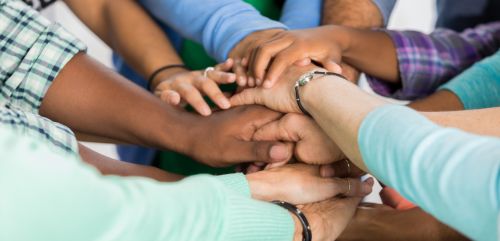Resource Library

5 Facts About the Importance of Caring Adults During Our Adolescent Years
March 30, 2022 | Filed in: Fact SheetAs we mature during adolescence, exercising more responsibility and personal agency, we become less physically dependent on adult caregivers. Yet parents and other caring adults remain as important to our healthy development as when we were younger. Below are five fast facts about the important role parents and other caring adults continue to play throughout our adolescent years. Secure and…

Breaking Up: Love and Loss in Adolescence
February 17, 2022 | Filed in: VideoAdolescence is a time of intense social learning, and romantic relationships, and even breakups, can be powerful learning experiences during these years. But how can adults support this learning while young people are hurting? In a recent panel discussion, experts Dr. Nicole Green (UCLA), Dr. Ahna Suleiman (Sacramento State University), and Youth National Scientific Council members Makayla Dawkins…
_500_281_80.jpg)
Supporting Youth in the Context of Family
November 19, 2021 | Filed in: VideoDr. Velma McBride Murry, a professor at Vanderbilt University, talks with Dr. Andrew Fuligni about her extensive research on African-American parents and youth, and how she has used this information to develop and implement the Pathways for African American Success Program (PAAS) to enhance families’ skills to help their pre-teens make good decisions as they prepare to enter high school.
_500_241_80.jpg)
The Intersection of Adolescent Development and Anti-Black Racism
August 9, 2021 | Filed in: Council Report | STEPS for Youth | Education | Community Engagement | Adversity, Bias, & Discrimination | Juvenile JusticeThis first Council Report from the National Scientific Council on Adolescence summarizes research on how racism and related inequities impact key developmental milestones of adolescence and offers policy and practice recommendations to support Black youth.
A Conversation on Youth Mental Health
June 16, 2021 | Filed in: VideoAdolescent mental health was in the headlines long before the COVID-19 pandemic hit. The effects of the virus and related restrictions have added new twists to the discussion, highlighting rising rates of anxiety and depression while also creating an opportunity to prioritize youth well-being as we move forward. The UCLA Center for the Developing Adolescent partnered with Young Invincibles (YI) to…

Supporting Positive Development for LGBTQ+ Youth
June 2, 2021 | Filed in: Fact SheetResearch-based information about helping LGBTQ youth thrive

How We Can Support Healthy Romantic and Sexual Development for Youth
January 27, 2021 | Filed in: VideoRomantic relationships during our adolescent years can be important aspects of healthy development and social learning. Given that most of this learning occurs in the context of peers, what kind of impact are social distancing and other COVID-related restrictions having on young peoples’ romantic and sexual relationships? And what can adults do to support healthy sexual and romantic development,…

How Developmental Science Can Help Address Anti-Black Racism During Adolescence
October 2, 2020 | Filed in: Brief
How Developmental Science Can Help Us Address Inequities During Adolescence
September 15, 2020 | Filed in: BriefAdolescence—beginning at the onset of puberty, around 10 years old, and ending in our mid-20s—is a key window of opportunity for shaping positive trajectories that can last a lifetime. During adolescence, our developing brains are learning and adapting in ways that naturally take advantage of supportive relationships, environments, and experiences for growth and development. Unfortunately, the…
